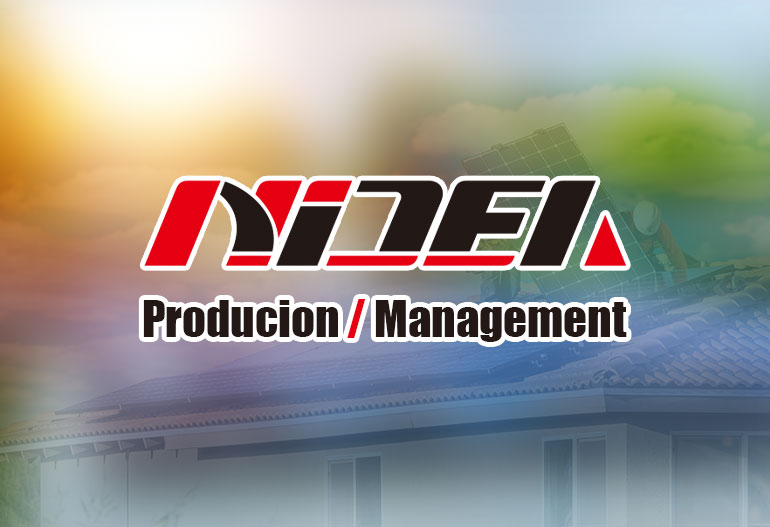An Economically Suitable Configuration Guide for Modular UPS in Small and Medium Enterprises
1. Introduction: The Critical Role of Power Protection for SMEs
For Small and Medium Enterprises (SMEs), uninterrupted operations are not just a goal but a necessity for survival and growth. Power interruptions—whether blackouts, voltage sags, or surges—can lead to data loss, hardware damage, operational downtime, and ultimately, significant financial loss and reputational harm. An Uninterruptible Power Supply (UPS) system is the primary defense against these disruptions.
However, for SMEs with limited capital and IT resources, selecting the right UPS solution is a challenging balancing act between cost, performance, and future needs. Traditional monolithic UPS systems often present SMEs with a difficult choice: over-invest in a large-capacity unit for future growth or under-invest in a smaller unit that may quickly become obsolete. Modular UPS technology elegantly solves this dilemma, offering a uniquely scalable and cost-effective path to power resilience. This guide provides a comprehensive framework for SMEs to understand, evaluate, and configure an economically optimal modular UPS system.
2. Why Modular UPS? Addressing Core SME Challenges
Modular UPS systems are built around a frame (or chassis) that houses multiple, hot-swappable power modules, control modules, and battery modules. This architecture directly addresses the key pain points of SMEs:
•
Capital Expenditure (CapEx) Optimization: Instead of purchasing a large, monolithic UPS upfront for future capacity, an SME can buy a frame with only the power modules needed for their current load. This right-sizing dramatically reduces the initial investment.
•
Unmatched Scalability: As the business grows and power needs increase, additional power modules can be added to the existing frame without downtime or system replacement. This pay-as-you-grow model protects the initial investment and defers capital costs.
•
Enhanced Resilience and Availability: The N+Xredundancy inherent in modular design is a game-changer. If one power module fails, the remaining modules seamlessly share the load, ensuring the critical load remains protected without needing a standalone redundant UPS system. This provides enterprise-class availability at an SME-friendly price point.
•
Predictable Operating Expenses (OpEx): High efficiency across a wide load range (especially at the typical 30-60% loads seen in SMEs) translates directly into lower electricity bills and reduced cooling costs. Furthermore, simplified maintenance and hot-swappability reduce service costs and mean time to repair (MTTR).
3. A Step-by-Step Configuration Guide for SMEs
Step 1: Conduct a Detailed Load Audit
The foundation of an economical configuration is a precise understanding of your current power needs.
•
Identify Critical Loads: List all equipment that must be protected (e.g., servers, network switches, storage systems, telecom equipment, critical workstations).
•
Calculate Total Power (kVA/kW): For each device, note its rated power (found on the nameplate in VA or W). Sum these values to get the total connected load.
•
Determine Actual Load: The connected load is often higher than the actual draw. Use a power meter (a clamp meter can be used at the distribution panel) to measure the real operating current and power. A good rule of thumb for a server room is to assume an initial load of 60-80% of the connected load.
•
Example: An SME might have a calculated connected load of 8 kVA but an actual measured load of only 5.5 kVA.
Step 2: Select the Appropriate Modular UPS Frame Size
Choose a frame whose maximum capacity aligns with your long-term (e.g., 5-year) growth forecast. The frame is a long-term asset; the modules are the scalable components.
•
SME Typical Range: Modular UPS frames are available in sizes suitable for SMEs, such as 20kVA, 40kVA, 50kVA, or 80kVA frames.
•
Scenario: If your current load is 5.5 kVA and you expect to grow to 10 kVA within 5 years, a 20kVA frame is an ideal choice. It provides ample room for growth without being excessively large.
Step 3: Determine the Initial Module Configuration
This is the core of cost-saving. Populate the frame with the minimum number of power modules required to support your currentload, plus redundancy.
•
Module Sizes: Power modules are typically available in discrete sizes, commonly 5kVA, 10kVA, or 20kVA.
•
The N+XPrinciple:
•
Nis the number of modules required to power the actual load.
•
Xis the number of redundant modules for fault tolerance.
•
Calculation:
Number of Modules = (Total Actual Load / Power per Module) + X•
Example: For a 5.5 kVA load using 5kVA modules and desiring N+1redundancy:
•
N= ceil(5.5 kVA / 5 kVA) = ceil(1.1) = 2 modules (providing 10kVA of capacity).
•
N+1= 2 + 1 = 3 modules.
•
Initial system capacity: 3 x 5kVA = 15kVA within the 20kVA frame.
•
This configuration provides 10kVA of available power with 5kVA of redundancy. The load is only 5.5 kVA, so the system operates at a high efficiency level with full N+1protection.
Step 4: Battery Runtime Sizing
Determine the required backup time during a power outage. For SMEs, the goal is often to allow for a graceful shutdown of equipment or to bridge short-term grid failures.
•
Common Requirement: 5 to 15 minutes of runtime is often sufficient to cover the gap until a backup generator starts or to safely shut down systems.
•
Factor in Battery Module Capacity: Modular UPS systems often use scalable battery packs or trays. Calculate the required Amp-hour (Ah) capacity based on the load (kW), DC voltage, and desired runtime. Many vendors provide online runtime calculators.
•
Economical Tip: Avoid oversizing batteries. Longer runtimes (e.g., over 30 minutes) exponentially increase cost. For extended outages, consider a backup generator as a more cost-effective solution.
Step 5: Evaluate Key Total Cost of Ownership (TCO) Factors
The economically optimal choice is not the one with the lowest sticker price, but the one with the lowest TCO over 5-10 years.
•
Upfront Cost (CapEx): Cost of the frame, initial power modules, and battery packs.
•
Energy Efficiency (OpEx): Compare efficiency curves at your typical load (e.g., 30-40%). A 2% efficiency difference can save thousands in electricity costs over the system's lifespan. Target systems with >96% efficiency at 50% load.
•
Service and Maintenance (OpEx): Modular systems often have lower maintenance costs. The ability to hot-swap a failed module yourself (with spares on site) can avoid costly emergency technician visits.
•
Future Expansion Cost (CapEx): The cost of adding a new 5kVA module in the future is a known and predictable value.
4. Recommended Economical Configurations for Common SME Scenarios
5. Implementation and Best Practices
•
Professional Site Assessment: Engage with a qualified vendor or integrator to validate your load audit and site conditions (space, cooling, power distribution).
•
Prioritize Service and Support: Choose a vendor with a strong local service network. For SMEs, a comprehensive extended warranty or service contract can provide budget predictability.
•
Plan for the Future: Keep a spare power module on site if your risk tolerance is very high. This is often more cost-effective for an SME than paying for a higher level of redundancy (N+2) within the system itself.
•
Integrate with Monitoring: Ensure the UPS has a network management card and cloud monitoring capabilities. This allows for proactive alerts and remote management, reducing the need for on-site IT staff to constantly check the system.
6. Conclusion
For Small and Medium Enterprises, a modular UPS is not an luxury but a strategically smart investment. Its inherent flexibility, scalability, and resilience directly address the budget constraints and growth aspirations that define the SME sector.
By following a disciplined configuration process—right-sizing the frame, starting with a minimal but redundant module set, and carefully calculating battery needs—an SME can deploy a world-class power protection system that optimizes both upfront capital expenditure and long-term operating costs. This approach transforms the UPS from a static cost center into a dynamic, scalable asset that grows in lockstep with the business it protects, ensuring that a momentary power failure never becomes a threat to the enterprise's survival or success.

